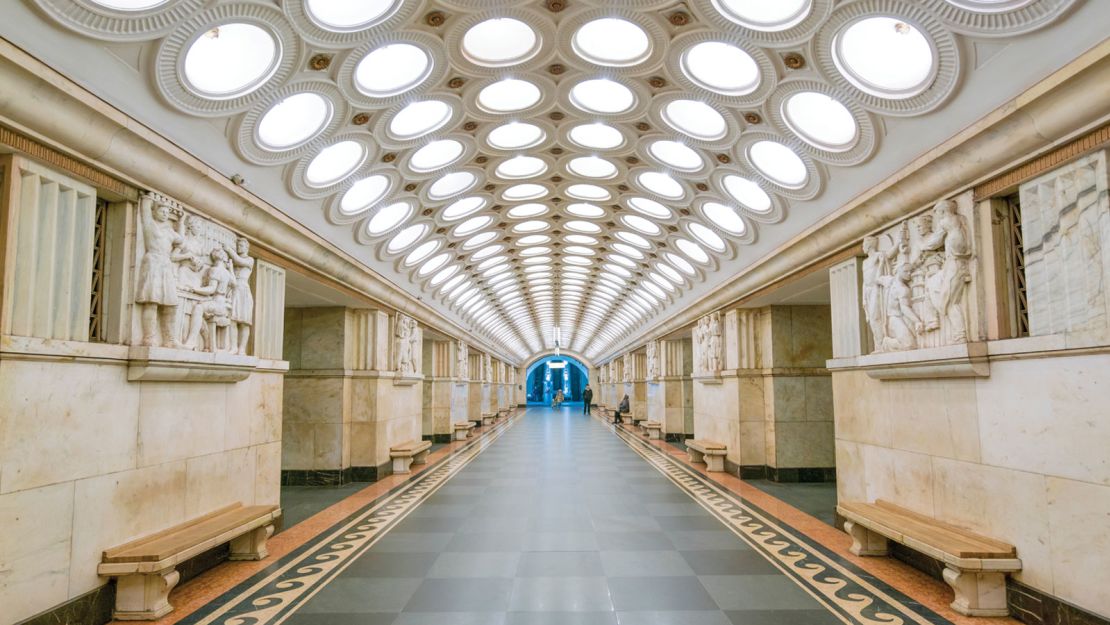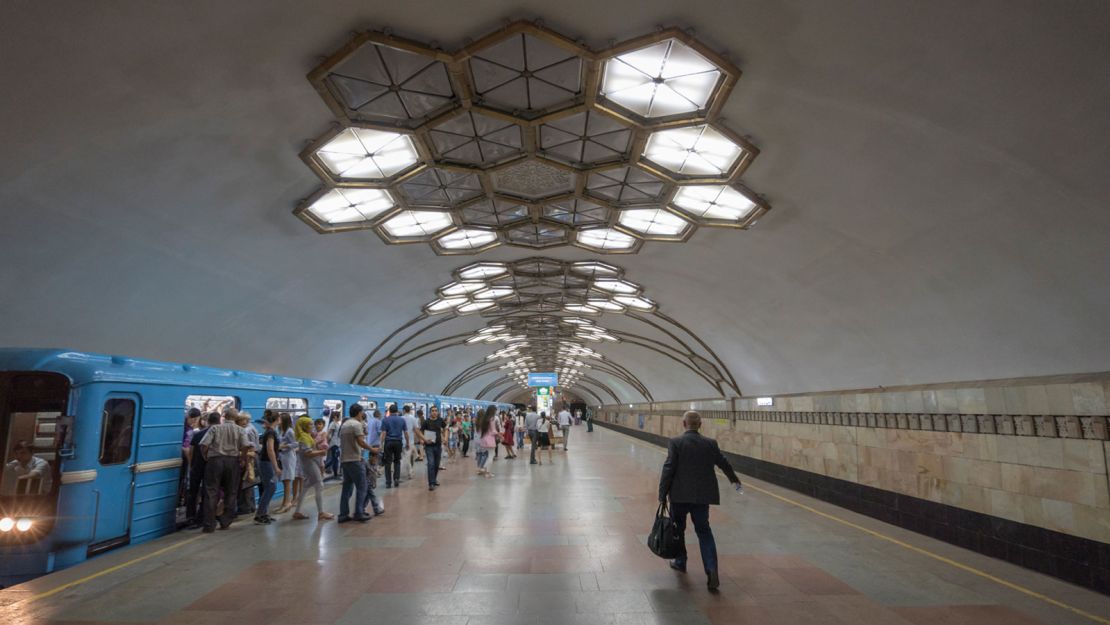Traveling along one of the metro networks built across the Soviet Union between the 1930s and 1980s feels a bit like entering a series of historic underground monuments.
Filled with decadent chandeliers, marble columns, mosaics and grand statues, the lavish stations are as far removed from the standard commuter experience as it gets.
But unlike the underground transport systems of cities such as London or New York, the network of the former USSR was essentially used as a Soviet propaganda venture.
Soviet Union dictator Joseph Stalin wanted the stations to be “palaces of the people” and subsequently brought in some of the best designers and architects around to bring his vision to life.
Seven decades of history

Canadian photographer Christopher Herwig documents many of the stations along these metro systems, which cover 15 cities and six countries, in his new book “Soviet Metro Stations,” a collaboration with author and journalist Owen Hatherley.
The result is a stunning collection of images showcasing the elaborate stations that feature a mix of Byzantine, medieval, baroque architectural styles, and the stories behind them.
“Just recently, a lot of the restrictions that prohibited photography in the metro got lifted, which allowed me to really dive into this project,” Herwig explains in a promotional video for “Soviet Metro Stations,” the first photobook to cover all the metros from the former USSR.
“Over 20 years ago, I was initially blown away by the palatial stations with fancy classical columns and chandeliers.
“But I soon found out that the metro expands over seven decades of history and design.
“There’s so much more to them to fall in love with and get excited about.”
Subterranean expedition

Herwig’s subterranean expedition follows his previous book “Soviet Bus Stops,” which saw him travel to 14 former Soviet countries and capture some of their most unusual bus stops.
“Just as I loved hunting bus stops around the former Soviet Union, this was also amazing fun,” he adds.
“There was so much more to each station than just a platform. There was an exterior. There were escalators, little details, different fonts, statues and lights.”
One of the stand out stations included is Ploschad Revolutsii, located under Revolution Square in central Moscow.
It features around 80 sculptures depicting everything from Soviet sailors, to students and even a guard kneeling alongside a dog. Locals believe that patting the dog’s nose will bring you good luck.
Meanwhile Mayakovskaya station in the Tverskoy District of central Moscow, once used as an air raid shelter, has various mosaic panels of cheerful Soviet workers in factories and fields.
The Technical University station in Tbilisi, Georgia is also particularly beautiful. As is the Komsomolskaya station in Moscow, which has vaulted ceilings and artwork by famous Russian painter Pavel Korin.
“Soviet Metro Stations” by Christopher Herwig and Owen Hatherley is published by FUEL Publishing.












